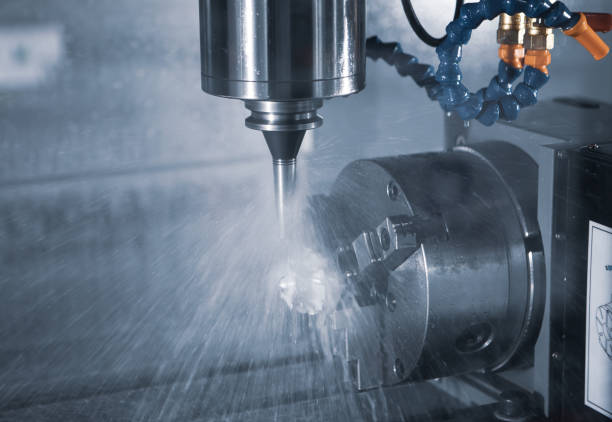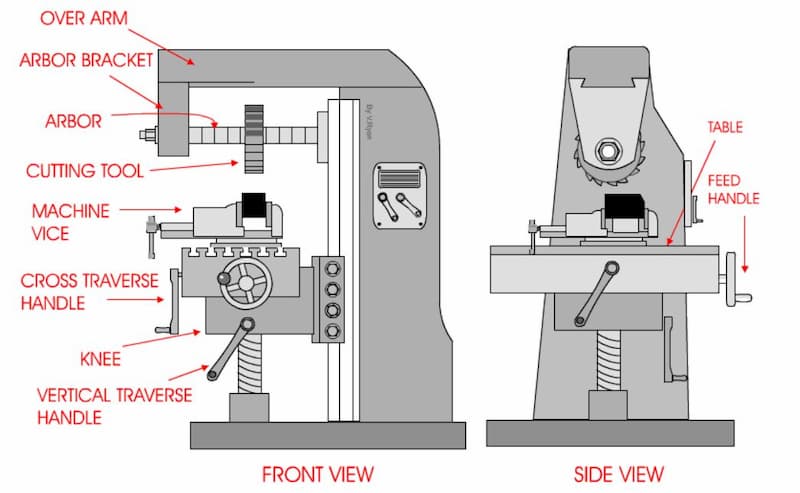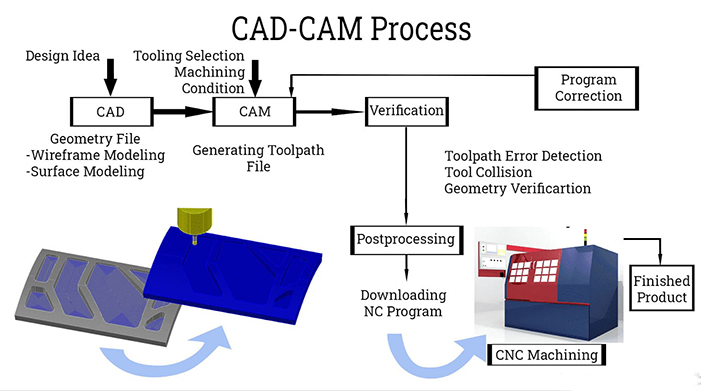Modern manufacturing technologies, such as Computer Numerical Control or CNC, significantly impact the manufacturing industry. By bridging the gap between computer technology and mechanical processes, CNC machines have brought revolutionary enabling manufacturers to attain precision, efficiency, and repeatability levels. There are many different types of CNC machines, and the CNC milling machine is one of them. It stands out as one of the most widely used CNC machines. These fantastic machines can shape the materials into detailed parts or finished products, proving that engineering has dramatically improved.
CNC machines are a bridge between ideas and reality. In this article, we will look at the working principle of a CNC milling machine, its components, and the broader implications it carries in the manufacturing sector. It doesn't matter if you are a skilled engineer, a curious technician, or someone who wants to gain insights into the workings of a CNC milling machine; this article will help you know about the future of production with CNC milling machines and the limitless possibilities it holds.

CNC Milling, an abbreviation for Computer Numerical Control milling, is a subtractive manufacturing process that employs computerized controls and rotating multipoint cutting tools to progressively remove material from a workpiece and produce a custom-designed part or product. Unlike additive manufacturing, where material is added layer by layer, CNC milling is about removing material to achieve the desired shape.
In yesteryears, milling was a demanding and labor-intensive craft, requiring skilled artisans to meticulously operate an array of machines and tools, all dedicated to shaping materials with precision. During the transformative decades of the early 1940s and 1950s, a burgeoning fascination with amalgamating computational prowess and tangible manufacturing processes emerged. Despite its initial formidable challenges, this ambitious pursuit ultimately bore fruit, ushering in a new era of innovation—namely, the birth of CNC (Computer Numerical Control) machines, with milling machines as one of its noteworthy accomplishments.
The fundamental premise of CNC milling is straightforward: it translates digital design files into machine-readable instructions, guiding the milling machine on how, where, and when to move. This level of automation ensures that designs are brought to life with accuracy that would be almost impossible to achieve manually. The beauty of CNC milling lies not just in its precision but also in its versatility. CNC milling machines have found applications in various industries, from aerospace components to intricate jewelry, underscoring their integral role in modern manufacturing.
Although a CNC milling machine may look like a single unit, it comprises several parts and components. All of these components have a specific role, and they work together to ensure that the machine produces accurate results with high precision. Let’s take a look at some of the major components:

The backbone of any milling machine is its main frame and structure. The frame provides stability to the machine to ensure that the machine can tackle the focus generated during the milling process. The frames are usually made from cast iron or welded steel because the frame must stand firm to maintain accuracy.
The spindle can be considered the heart of any milling machine. The primary function of the spindle is to hold and rotate the cutting tools. It is responsible to remove the material from the workpiece. The speed of the spindle is measured in RPM and can be different depending on the nature of the tasks. Some milling machines can work at a very high RPM for specific tasks.
The main responsibility of the table is to hold the workpiece in its place. In a CNC milling machine, a table can move in multiple directions (axes), enabling the workpiece to be approached from many angles. Clamping fixtures and vices are mostly used to hold the workpiece on the table firmly.
The control panel is the brain of the CNC milling machine. The machine operator can input commands, monitor operations, and control the milling process using the control panel. It feeds the machine with machine-readable instructions like G-Code to guide its movements.
The basics of a milling machine is its capability to move in different directions. Usually, the basic CNC machines move in 3 directions: X, Y, and Z axis. On each axis, it has a linear motion. However, some advanced machines produce rotatory motion, leading to the movement in 4-5 axes or even more complex configurations. This additional axis allows the machine to make more complex designs and patterns, opening doors for endless possibilities in manufacturing.
If you want to master the working of a CNC machine, you should be well aware of these components. All these components work collectively as a single unit, taking digital designs, and turning them into physical products with high accuracy and precision.
The wonders of CNC milling machines are not only in their components but also in their operational intelligence. The perfect combination of software and hardware brings the desired things to life. Let’s take a look at the working principle of a CNC working machine:

Before starting any milling process, the first step is to design the object in a digital environment. Architects, designers, and engineers perform this step. They use CAD software to craft a 3D model of a part or product they want to manufacture.
Once the design is finalized, it is fed to CAM software. This software translates the design into instructions a milling machine can understand and execute. Cam is a bridge between design and production.
The output of the CAM software is a set of instructions known as G-code. It is a universal language for CNC machines. It determines how the machine should move, which tool it should use, and the speed of the tool. There are many other critical parameters included in it.
When inputting the G-code into the CNC milling machine, it deciphers the instructions and commences the milling process. The machine moves its table and spindle across the specified axes as the code dictates. This coordinated movement ensures that the cutting tool interacts with the workpiece just as the design intended.
Based on the G-code instructions, the milling machine may need to switch between various tools to achieve the desired outcome. The tool magazine comes into play here. When a tool change is required, the machine automatically selects the appropriate tool from the magazine, minimizing manual intervention and maximizing efficiency.
Ensuring the accuracy and precision of the milling operation are feedback systems, often comprising encoders and resolvers. These systems continuously monitor the machine's movement and compare it to the expected movement from the G-code. Corrective actions are taken in real time if discrepancies arise, ensuring the final product matches the initial design with high fidelity.
In short, a CNC milling machine combines mechanical movements and software instructions integrated seamlessly to convert raw materials into finely crafted products. Although the working principle of a CNC milling machine may seem linear, it results from decades of effort in engineering and innovation. It has brought the best of computing and machinery to redefine the concept of manufacturing.
CNC milling machines have diverse applications due to their precision and efficiency. Some of the most prominent sectors are:
Crafting of parts of aircraft, missiles, and satellites requires a high level of precision and accuracy. Due to strict industry standards, CNC machines are a key player in manufacturing.
Manufacturing components for cars, motorcycles, and trucks, ranging from engine parts to intricate dashboard elements.
It is also used to create surgical, dental, and medical equipment. As patient safety is essential in the medical field, CNC milling machines play a great role here due to their precision.
Producing parts for electronic devices, including housings, PCBs, and other components that require exact dimensions.
Manufacturing items ranging from household appliances to tools, toys, and other products where mass production with consistent quality is needed.
Crafting intricate designs, molds, or directly creating jewelry pieces with great detail and precision.
Technology has changed the way things are manufactured. A good part of this concept is the CNC milling machine. It is a great addition to the manufacturing world as it combines accuracy, automation, and flexibility. This machine is not for a specific industry but for all manufacturing industries. It makes things faster and cheaper, allowing us to develop new and creative products.
As we gaze into the future, it's clear that computers and CNC machines will keep revolutionizing the manufacturing world. The whole idea of turning digital thoughts into real-life objects is mind-boggling! Whether you're hands-on with these machines or just plain curious about the art of making stuff, diving into the world of CNC milling is like taking a sneak peek into the future of how things are produced. It's like having a superpower that's reshaping the way we create things.